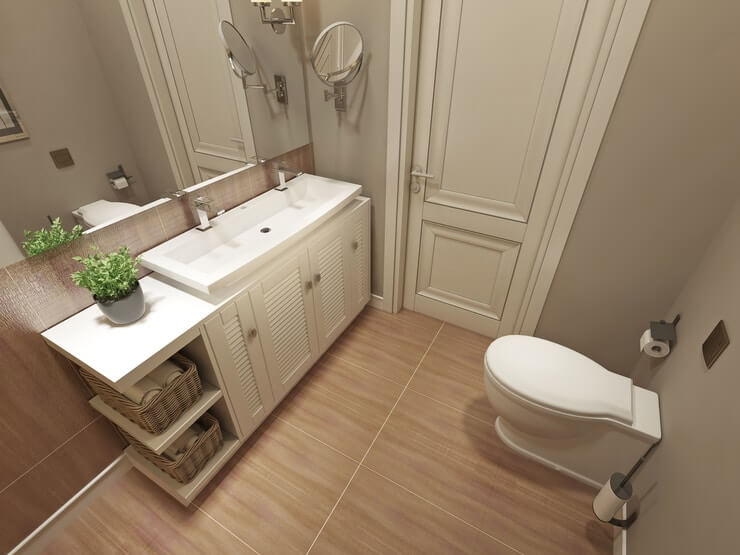Half bathrooms are often overlooked when it comes to upgrades and custom features.
However, one feature you should not forget about when it comes to half baths is proper ventilation. Moisture and odors still exist in a half bath, and you need a way to get rid of them.
Half bathrooms have no bathtub or shower and do not need ventilation as badly as a full bathroom. If you decide to install an exhaust fan, though it’s usually not required, building codes state you have to vent the fan outside. But there are more straightforward solutions like using a fan or dehumidifier.

So, do you really need an exhaust fan for a half bath, and if not, what can you do to remove moisture and odors from your half bathroom?
Read on to find out.
Is an Exhaust Fan Required in a Half Bathroom?
When it comes to building regulations and codes, it’s important to note that they change from country to country or even from city to city. So what’s acceptable in one area may be a fineable offense in another.
But when it comes to exhaust fans in half bathrooms, the majority of municipalities do not require them. So odds are the area you live in does not require these recirculating bathroom fans either, but it’s always best to double-check.
How to Deal With Moisture in a Half Bathroom
Household Fans
A simple fan that’s used around your home, such as a box fan or oscillating fan, can help remove moisture from your bathroom. These fans are inexpensive and easy to move around.
After using the toilet or sink, you can bring the fan into the bathroom and run it for an hour. Afterward, the fan can go back to cooling your home or whatever other purpose it had.
Window
Not all bathrooms have windows, but they can help fight moisture if yours does.
The size and type of window your bathroom has matters. Bathrooms usually have small windows, but larger windows allow for more air circulation.
For a half bathroom, just opening a window for a few hours a day can have a dramatic effect on moisture.
Bathroom Dehumidifier
A bathroom dehumidifier will cost you more than a household fan, but they are well worth the investment.
A dehumidifier uses sensors to read the moisture in the air. If it senses the room is too humid, it will turn on.
This way, you can put it in your bathroom, and it will eliminate moisture day or night. You can even install these units on your ceiling if electrical hazards are a concern.
Plants That Absorb Moisture
There are certain plants that can reduce humidity by absorbing moisture and invigorating the room’s air in the process.
Plants such as Aloe Vera, Begonia, and Azalea among many others all absorb moisture in the air. Plus, you get an additional decorative element to your bathroom that only requires a little attention, sunlight, and water.
How to Deal With Odor in a Half Bathroom
Air Fresheners
Air fresheners come in many forms, such as sprays, mist diffusers, and plug-ins. Most bathrooms have some type of air freshening device.
The question is whether or not they are working.
You can choose from a variety of air-freshening options. Take some time to research and try different things to find what works for you and your space.
Ductless Bathroom Fan
Ductless bathroom fans are fantastic products that allow you to ventilate a room without the need for an exhaust vent. These fans use a charcoal filtration system to remove foul odors from the air.
Ductless fans require maintenance through filter changes but are easier than having to cut a hole in your ceiling or create a vent in your basement.
Plants That Absorb Odor
Most plants have lovely aromatic qualities, but certain plants can use those aromatic qualities to absorb foul odors in the air.
Plants like Golden Pothos, English Ivy, and Peace Lilies have all been proven to remove foul odors from the air. Plants do require some care and attention but also add to the aesthetics of your bathroom.

